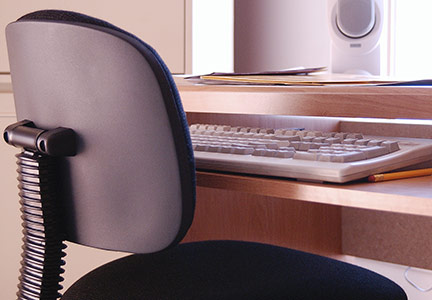How much time does a person sit at home and how does it affect his or her overall health? Some studies note that worldwide the average person spends roughly 300 minutes, or 21% of their day sitting; many people spend much longer. [Note: Ad or content links featured on this page are not necessarily affiliated with IICRC (The cleantrust) and should not be considered a recommendation or endorsement by IICRC (The cleantrust)].
What can remain after we get up? In many cases, “fallout”: We spill food or drink on our favorite upholstered or leather recliner, sofa, or overstuffed chair. Children or pets may carry dust and dirt from the floor to the sitting area by putting their feet on or jumping on the furniture. As we sit and talk, read, watch TV, or play video games, we may transfer hair and body oil, dead skin, residue from perfumes, lotions or other products onto the surface of furniture; not to mention flu and cold germs, aerosol from sneezes and more.

Has our furniture been cleaned recently? Has it ever been cleaned? What can be done to make the surface of our favorite comfy chair healthier (or more healthful), safer, more attractive? The IICRC has suggestions.
Don't Forget to Clean the Furniture
Giving furniture proper attention during routine housecleaning helps. What can be done?
- Upholstered Furniture—Vacuum upholstered furniture to remove dust, dirt, and/or pet hair, getting under cushions where chips, candy, and loose change may hide. A rubberized brush attachment may help remove hair. An upholstery “extraction” cleaning machine can help remove sticky soil on upholstery.
- Leather Furniture—Wipe down leather furniture with a soft dry cloth (such as microfiber) periodically to remove dust. Removing dirt and oils may require the use of liquid and a damp cloth. Warning: Too much liquid can damage leather! (NOTE: It's wise to test in a small, inconspicuous area of the furniture first before using any liquid or cleaning product.) For general purpose cleaning: mix a few drops of liquid dish soap with a quart of water. Using a soft damp cloth and soapy water, gently wipe the surface of the furniture, cleaning a small section at a time. Repeat with a second damp cloth using clean water (wring out the cloth thoroughly) and wipe the leather to remove residue. Dry thoroughly with a third soft absorbent cloth. Use caution since aggressive scrubbing can damage leather. Using a stiff bristle brush is not recommended since it can scratch leather.
- Give immediate attention to spills.
Furniture and fabric manufacturers recommend consumers not wait until severe soiling occurs before cleaning. Why? The greater the soiling, the less the likelihood of restoring a fabric's or surface’s original color, appearance, and texture. IICRC recommends using a certified technician every one to two years.
Without proper care, costly upholstered or leather furniture can be easily and irreversibly damaged. The challenge is compounded by the variety of types of upholstery, leather and soils. Also, different cleaning agents are needed for various stains. Over-the-counter cleaning products may contain chemicals that can also cause problems. Overall, cleaning furniture can be complicated. IICRC recommends locating and using certified technicians trained to recognize and care for particular upholstery and leather types and stains.
Helping Furniture Helps You
Of course, while keeping your furniture clean is a healthy practice for fabric or leather, getting off the couch more is both good for your health and reduces wear on your valuable furnishings.









